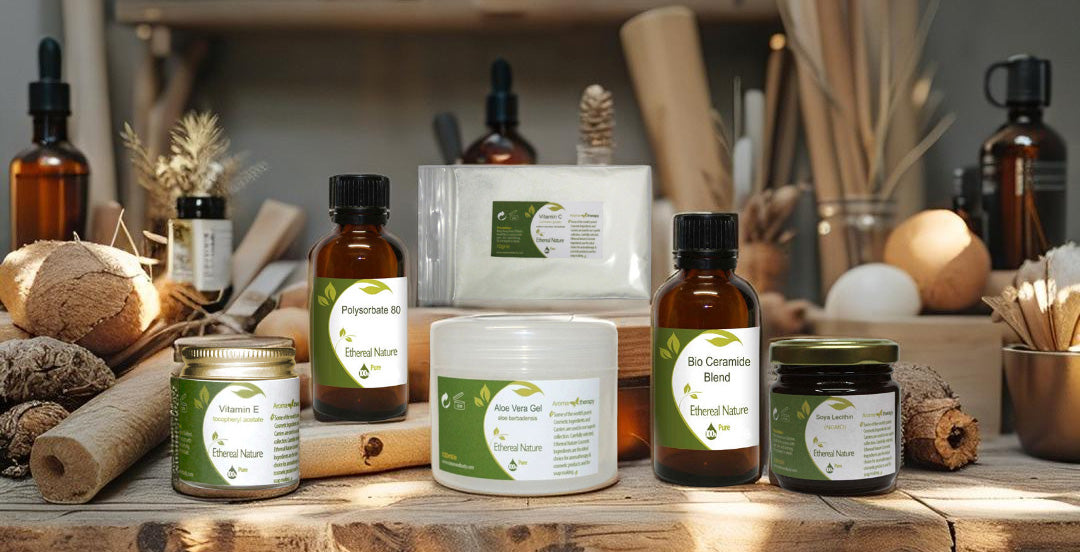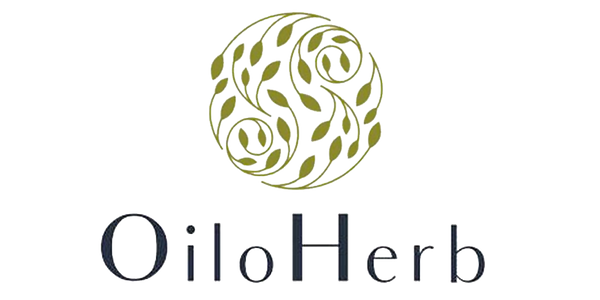
Raw materials for the manufacture of cosmetics
Share
The cosmetics industry relies on a wide variety of raw materials to create skin care, hair care, and beauty products. These ingredients serve different functions, from hydration and nourishment to stabilizing formulations and extending shelf life. Below is an in-depth look at the key raw materials used to manufacture cosmetics.
Cosmetic Raw Materials and Ingredients
Cosmetic formulations are composed of active ingredients (which provide benefits to the skin or hair), functional ingredients (which affect texture and stability), and additives (which enhance appearance, fragrance, or preservation). These raw materials can be of natural or synthetic origin.

Anti-aging Ingredients
Anti-aging cosmetics aim to reduce wrinkles, increase skin elasticity, and promote youthful skin. Key ingredients include:
· Retinoids (vitamin A derivatives): Stimulate collagen production and speed up cell turnover.
· Peptides: Signaling proteins that help repair and strengthen skin structure.
· Hyaluronic Acid: A humectant that hydrates and plumps the skin.
· Coenzyme Q10: An antioxidant that fights oxidative stress and enhances skin repair.
· Alpha Hydroxy Acids (AHAs) & Beta Hydroxy Acids (BHAs): Exfoliate and promote cell renewal.
· Herbal extracts (green tea, ginseng, grape seeds): Provide antioxidant and anti-inflammatory benefits.
Vitamins and Antioxidants for External Use
Vitamins and antioxidants protect the skin from environmental damage and improve skin health. Commonly used vitamins include:
· Vitamin C: Brightens the skin, boosts collagen synthesis, and fights free radicals.
· Vitamin E: Moisturizes and provides antioxidant protection.
· Vitamin A (retinol): Reduces wrinkles and evens out skin tone.
· Niacinamide (Vitamin B3): Improves skin elasticity and reduces inflammation.
· Vitamin K: Helps reduce dark circles and skin discoloration.

Cosmetic Cream Bases
A cosmetic cream base has a light texture and helps active ingredients penetrate the skin. Common bases include:
· Water: The main solvent in emulsions.
· Oils and butters: For hydration, such as jojoba oil, shea butter, and coconut oil.
· Silicones: Provide a silky texture and barrier protection.
· Glycerin: A humectant that locks in moisture.
Butters and Beeswax for Balms and Ointments
The most commonly used butters include:
· Shea Butter: Deeply nourishing and rich in fatty acids.
· Cocoa Butter: Provides hydration and protection to the skin.
· Avocado Butter: Ideal for dry and sensitive skin.
· Coffee Butter: Improves local blood circulation and thus contributes to lipolysis.
· Mango Butter: Light and full of vitamins.
· Beeswax: Acts as an emulsifier and protective barrier on the skin while also offering antimicrobial, moisturizing, and emollient benefits.

Emulsifiers
Emulsifiers mix oil and water to create stable creams and lotions. Common emulsifiers include:
· Lecithin: Derived from soy.
· Cetearyl Alcohol: A fatty alcohol that stabilizes emulsions.
· Cetyl Alcohol: Derived from the processing of palm oil and coconut oil. Used in many cosmetics as a "stabiliser".
· Glyceryl Stearate: Produces excellent emulsions and acts as a lubricant on the skin's surface.
Cosmetic Additives
These improve the performance, texture, or appearance of cosmetics:
· Fragrances & Essential Oils: Provide fragrance.
· Pigments and Dyes: Such as mica, iron oxides, and titanium dioxide.
· Thickeners: Such as xanthan gum and agar.
Preservatives
Preservatives extend the shelf life of cosmetics by preventing the growth of microbes. Common natural preservatives include:
· Grapefruit extract: very effective against a wide range of pathogens however, it does not completely protect cosmetic preparations (e.g. against mold).
· Optiphen: offers effective protection against bacteria and germs and is paraben-free and formaldehyde-free.
· GF Guard COS: a new generation preservative, effectively fights bacteria (99.9%) and mold (90.0%) and is paraben-free and formaldehyde-free.
· Benzyl alcohol: Natural preservative.
· Potassium sorbate & sodium benzoate: Mild preservatives often used in natural cosmetics.
Emollients for Cosmetics
Emollients soften and smooth the skin, forming a protective barrier. Examples include:
· Natural oils such as olive squalane, silicones such as vegetable silicone (coco-caprylate), lanolin, a natural emollient derived from sheep's wool, silk amino acids, vegetable glycerins, etc.

Clays and Exfoliants
These ingredients cleanse, detoxify, and renew the skin:
· Bentonite Clay: Absorbs excess oil and impurities.
· Green Clay: Ideal for detoxifying the skin.
· Rhassoul Clay: Provides deep rejuvenation to the skin and hair.
· White Clay: Ideal for gently exfoliating sensitive skin.
· Red Clay: Renews by adding radiance and reducing dark circles under the eyes.
· Activated Charcoal: Removes toxins and impurities.
· Dead Sea Mud: Improves local blood circulation.
· Natural exfoliants: Such as sugar, salt, coffee grounds, and crushed fruit seeds, such as cranberry seeds, olive, apricot, strawberry, etc.
· Chemical exfoliants: AHAs (glycolic acid) and BHAs (salicylic acid).
Cosmetic packaging
Packaging not only protects the product but also enhances its appeal. Common materials include:
· Glass jars & bottles: Maintain stability and prevent contamination.
· Plastic tubes & containers: Lightweight and cost-effective.
· Airless pumps: Prevent oxidation and extend shelf life.
Understanding the raw materials used in cosmetics is crucial to formulating effective, stable, and safe beauty products. Whether you are creating skincare, haircare, or makeup, choosing the right combination of ingredients ensures optimal performance and benefits for the end user.
